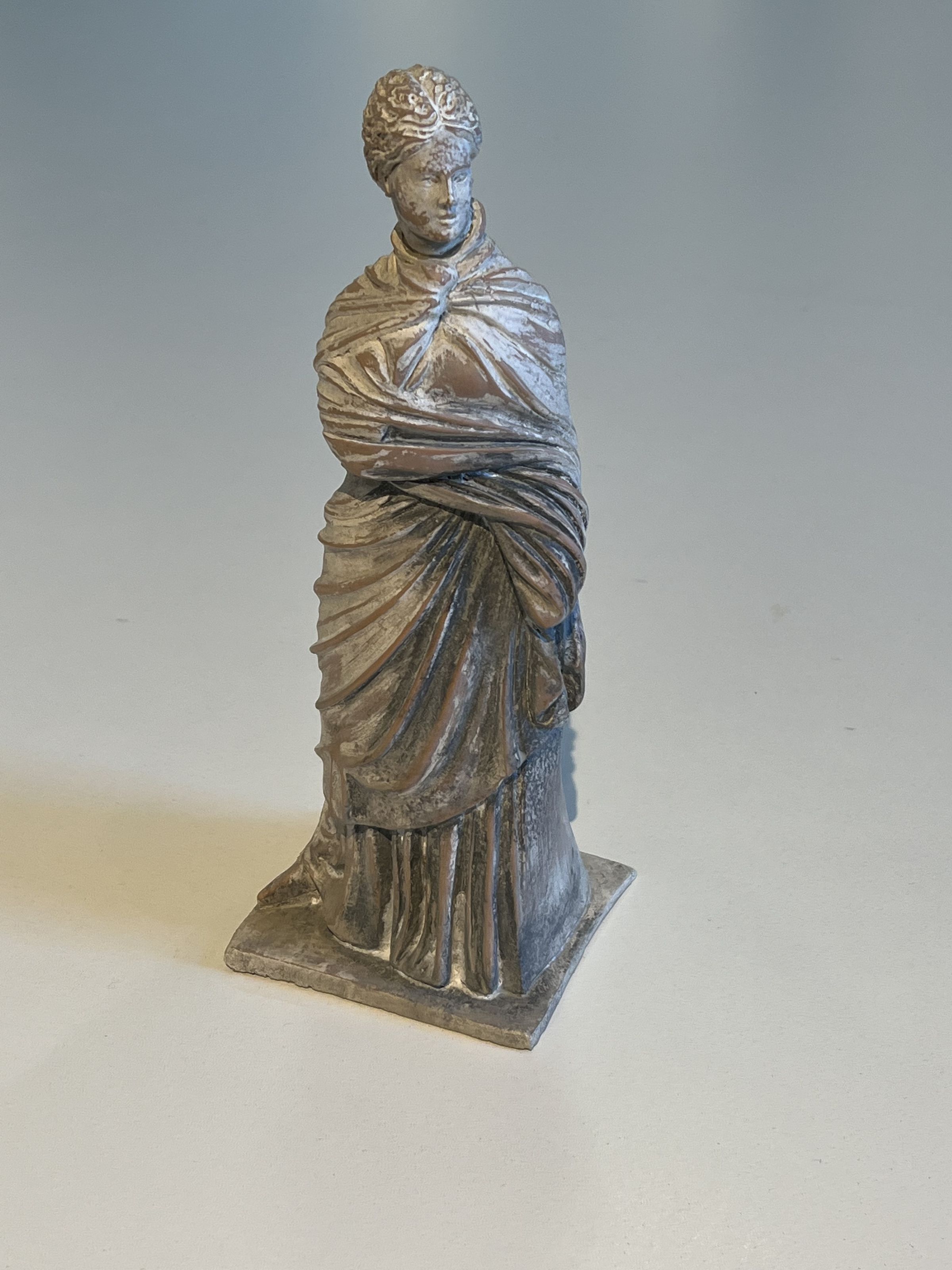Tanagra Figurine with Covered Hands
Name/Title
Tanagra Figurine with Covered HandsEntry/Object ID
22G02258Description
Standing female figurine wearing a chiton and himation. She turns to the left and holds her robes tightly around her with her right hand held to her chest and her left hand down at her left hip. Her hair is pulled back into a bun There are remnants of pink and black paint on the himation, and black paint on bottom part of the chiton. Remnants of flesh-toned paint of the face, neck and chest. Resin copy of terracotta original.Type of Sculpture
StatuetteArtwork Details
Medium
TerracottaSubject
Tanagra FigurineContext
Named after the Tanagra region of Boeotia, Greece where figures like these were discovered in the 19th century, many having been found in the context of graves. Most of the figurines, also referred to as “Tanagras”, depict fashionable women and girls, occasionally figures representing characters from the New Comedy plays of Menander, and on rare occasions young men and boys. These statuettes preserve the styles of dress and accessories worn by women and girls of the Hellenistic period. Bright colours were used to render naturalistic attributes using water-soluble paints. These small figurines approximate the colours that would have been used on larger marble sculptures. Production of the Tanagras began in the last quarter of the 4th century BCE, and production sites have been found all across the ancient Greek world, with some of the earliest examples located in Athens. The figures were made by pressing clay into two separate concave molds, one for the front and one for the back of the body. Any projecting arms and heads were attached separately before being fired in a kiln. This allowed for great variation and customization in the look of the figures. They are believed to have been largely made and used as votive offerings. By the end of the 4th century BCE they ceased to be objects of reverence, and were manufactured simply as representations of women and girls in everyday life. This woman, as with many depicted in the Tanagra figurines, displays wealth through her elaborate dress, and the earrings visible below her hair. She also displays the knowledge of how to manage such drapery around her body, which was an important part of the public display put on by Greek women of high status. The position of one arm bent at 90 degrees and held across the body while the other arm is held at an acute angle up towards the neck and face, is known as the Pudicitia format. It is a pose that displays restraint and modesty, which was important for Hellenistic women to present in the public sphere. The Pudicitia format became the most popular style for large-scale marble portrait statues of women in the Hellenistic period. Her hair is pulled back in the chignon style of bun common on Tanagra figurines, but the bun appears to have a cover over it.Collection
Hellenistic GreeceMade/Created
Date made
circa 300 BCE - circa 200 BCETime Period
HellenisticEthnography
Culture/Tribe
Greek - Hellenistic

